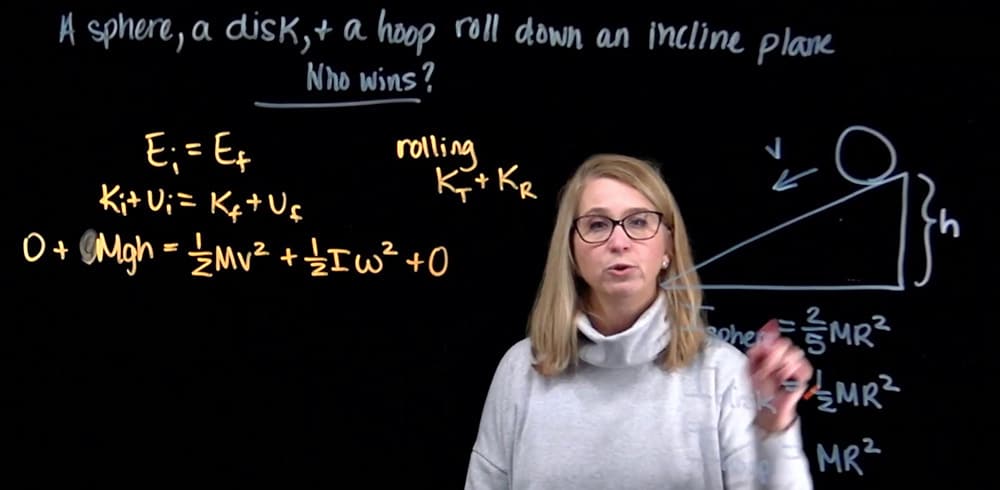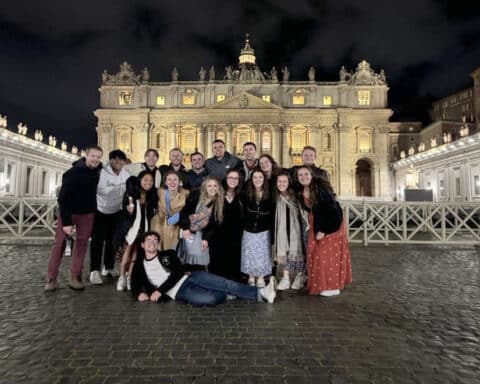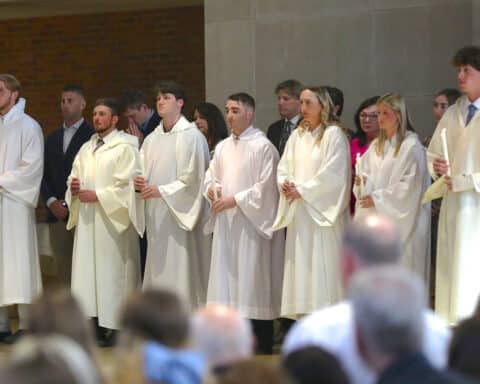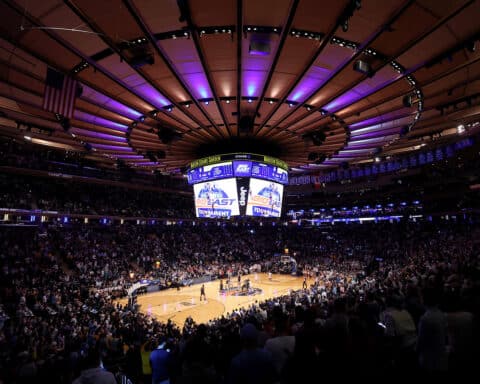The arrival of COVID-19 in 2020 launched a pandemic that disrupted the way of life across the globe — from economies to health care to governments to education — from pre-schools through colleges.
School doors closed across America to stop the contagion, sending students and teachers home to engage distance learning. When the new school year opened in late summer 2020, many schools remained shut, and innovation was the order of the day.
Now that a semblance of normality is returning to college campuses, Our Sunday Visitor spoke with leaders at Catholic colleges and universities about positive developments born of the necessity to teach with students and professors at home, offering for many a silver lining to the darkness of COVID.
Read more from our special college section here.
“The past two years, with all the restrictions the college was working under with the COVID situation, provided a reawakening of the importance of human contact, relationships and being together,” Dominican Father James Cuddy, vice president for mission and ministry at Providence College in Providence, Rhode Island, told Our Sunday Visitor. “We have missed something indispensable not being together. This is what God made us for. After, of course, making us to know him, to love him and to serve him in this world and to be happy with him forever in the next.
“We are starting to have more face to face, more working together and more praying together. If those are the things for which God made us, I think that is the silver lining.”
New ideas, new tools
Classrooms vacated to stop the spread of COVID led professors to find new pedagogical methods to achieve the benefit of the classroom outside the classroom, said Lynne M. Lawson, an assistant professor of physics at Providence.
“I think there are some things that I have changed or incorporated since the shut-down that are directly related to that event,” Lawson told Our Sunday Visitor. “Be more generous with deadlines. There is something about a pandemic that shifts your priorities. I used to be a stickler for deadlines. I didn’t accept late work, and to avoid getting into a discussion about whether a reason for late work was valid or not, I gave students some free drops,” Lawson said. “During the pandemic, it was clear that many students were under a lot of stress due to financial, housing and health concerns. Whether or not a homework assignment was turned in exactly on time no longer seemed as important. … To me, the important thing is that they finish the assignment. The particular day that it happens is less important. I actually have not had a lot of requests (for extensions) since I have instituted this policy.”
Lawson and her colleagues also found a new way to provide instruction when a classroom is closed for public health. They added something new to their instructional arsenal.
“One last thing that happened during the time we were in distance learning that I use today involves a piece of equipment that our college purchased for us. It is called a lightboard, and it allows you to write on a clear surface while being recorded, and the end result is you look like you are giving a lecture to your students,” Lawson said.
“This purchase came about when some of us (professors) saw that these existed on Twitter,” she added. “There was an immediate interest in having one, and some thought we should try to build one to use. Through the generosity of the college, two fully equipped lightboard studios were created on campus for us to use. These are great for producing videos for flipping the classroom, for showing examples or for live broadcast during class. I have received good feedback from the students. These videos are much better than a voice-over powerpoint; they enjoy seeing you as you are explaining a concept. I have created over 50 videos in the past year or so and use them now for students to watch before class.”
‘This will be a four-year hit’
At the annual meeting of the Association of Catholic Colleges and Universities on Feb. 4 in Washington, D.C., most of the 190 member schools across the country reported being open after a two-week hiatus to add a buffer of safety to COVID spread after students finished school breaks, said Father Dennis H. Holtschneider, president of the organization and a longtime president of DePaul University in Chicago.

“Schools are offering options for students with vulnerable situations,” he told Our Sunday Visitor.
The pandemic took its toll on the finances of Catholic colleges and universities, Father Holtschneider said.
“By and large, most faculty and staff are back with some online instruction continuing,” he said. “Schools were hurt badly by this and spent down their endowments. This will be a four-year hit from a two-year pandemic.
“Some schools downsized to operate with smaller staff and faculty to stay open. Our schools worked very hard to continue to have health care for our employees, even if they were laid off.”
Finding what works — and what doesn’t
Mount Saint Mary’s University in Los Angeles so valued the innovations that faculty brought to distance learning that it held a convocation 18 months later for its professors to share their ideas.
Emerald Archer, associate professor of history and political science and director of the Center for the Advancement of Women at Mount Saint Mary’s, reported how she paired students in her Politics of Globalization and Interdependence course with students around the world. They used the virtual exchange program Soliya to discuss issues such as the pandemic and global warming.
“Students loved it,” Archer said. “It got them thinking in different ways than if they were just talking to their Mount Saint Mary’s peers. One told me she learned how to be an active listener and understand different world issues.”
In a segment of the convocation called Teaching During a Pandemic: Resiliency, Transitioning and Returning to Campus, Lia Roberts, chair and professor of history and political science and academic director of the Center for Global Initiatives, found sometimes tried-and-true classroom exercises suffered for the lack of being in the classroom.
“In the regular classroom, we would separate into small groups and debate,” Roberts said. “But in an online classroom, breaking into discussion rooms rarely worked unless I set specific goals. Otherwise, everyone was silent.”
But some classroom techniques did translate.

“Simulations where students had assigned roles as various political actors worked well,” she said. “Students were just as engaged as they would be otherwise.”
Stephen Inrig, director and professor of health policy and management at Mount Saint Mary’s, found it helpful to distribute his lectures in advance.
“I had a flipped classroom where I pre-recorded my lectures, and then our online classes were much more of a discussion,” he said.
Inrig examined his own teaching methods as a result.
“It forced me to think through how I communicate to make sure I was addressing different learning styles and come up with teaching methods to do that,” Inrig said. “It helped me ensure engagement in ways that I can bring into the classroom.”
Joseph R. LaPlante writes from Rhode Island.





